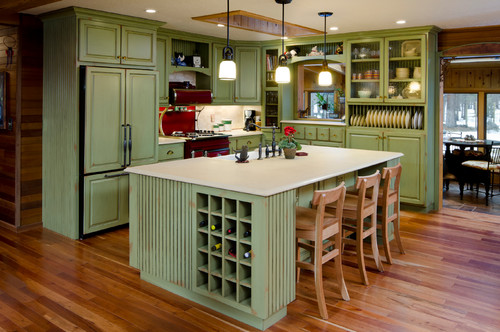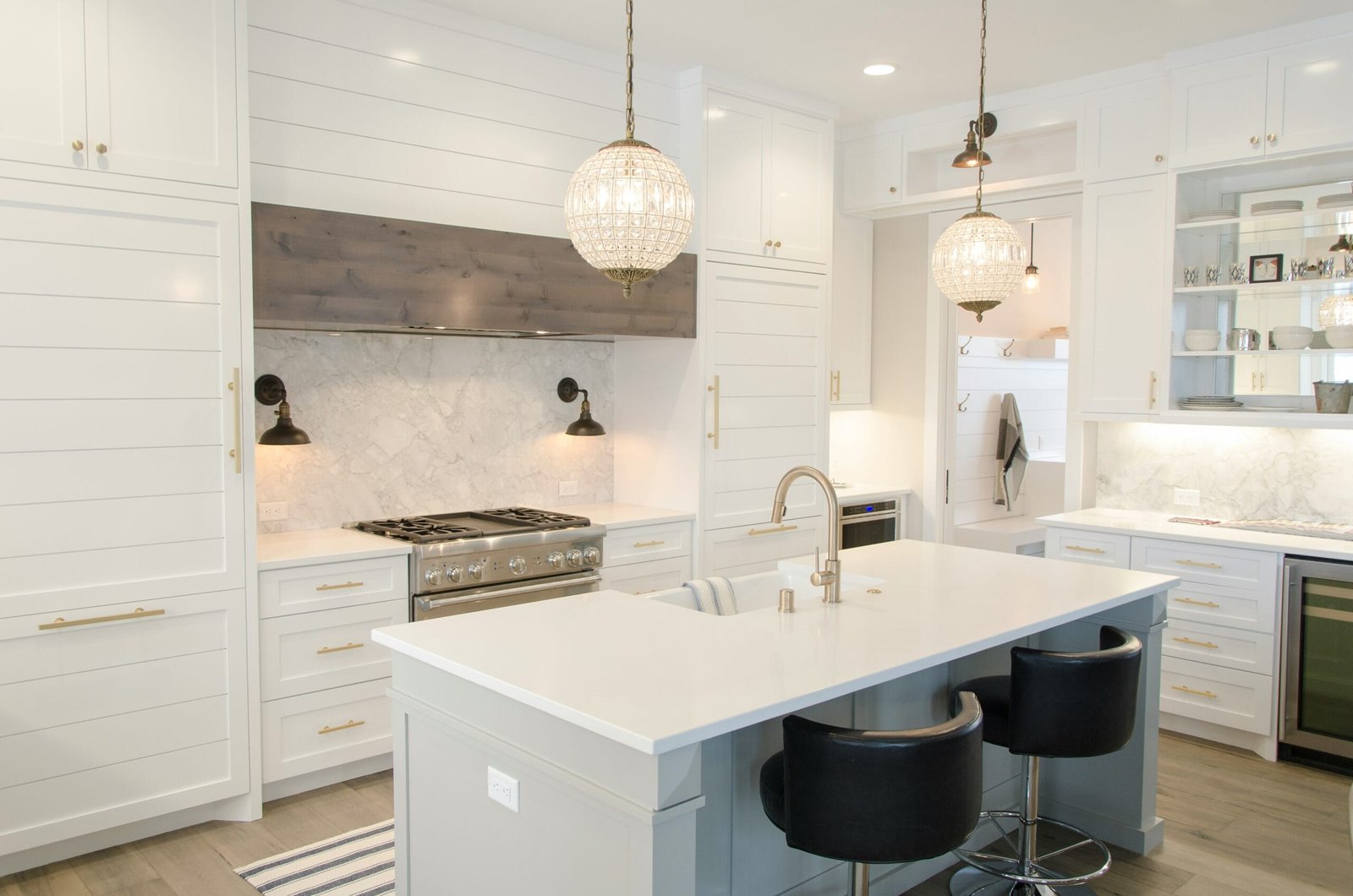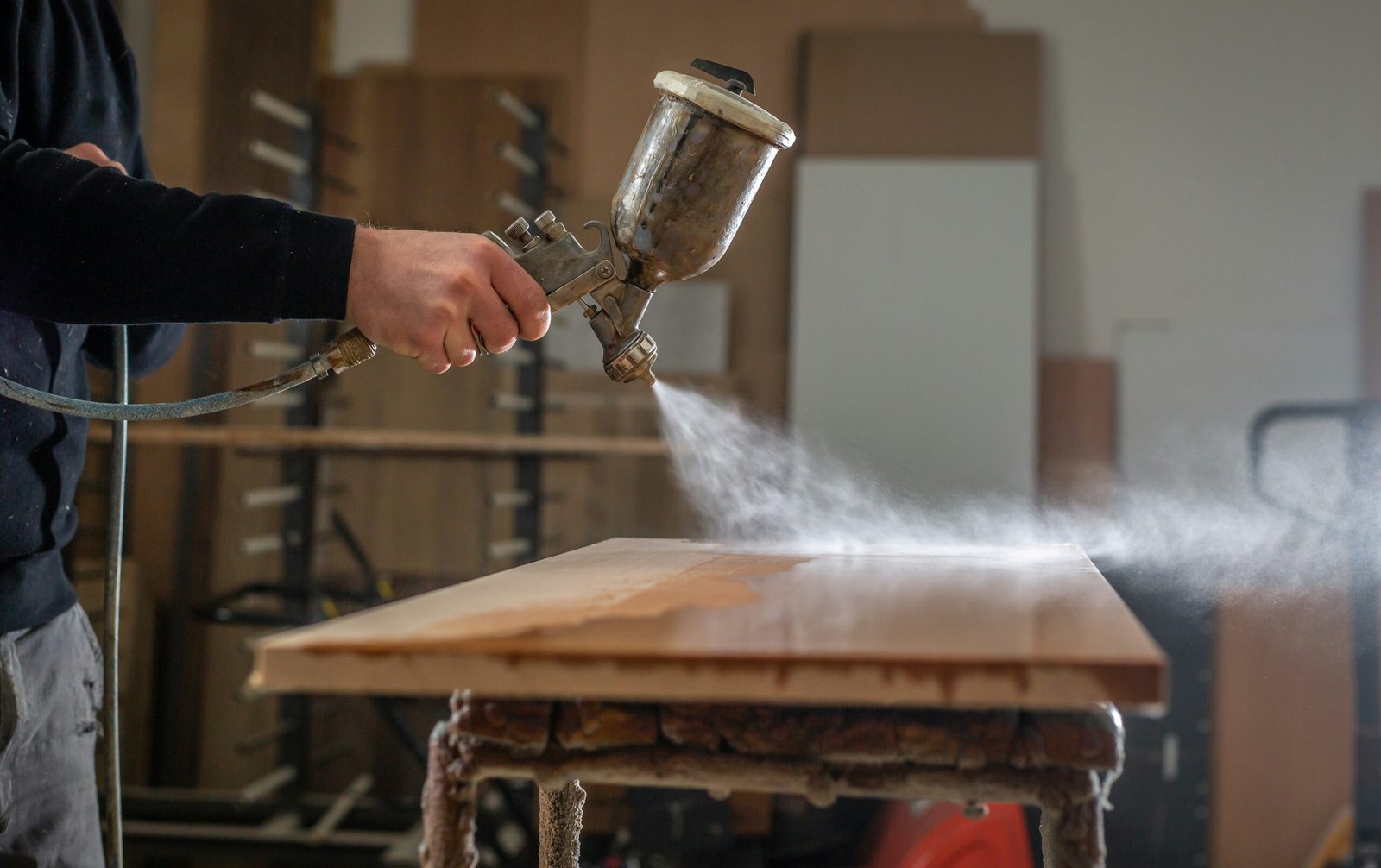Refinishing your kitchen and /or bathroom cabinets is maybe one of the most important steps in kitchen or bathroom remodeling. So, it’s important to know the basics of refinishing kitchen cabinets if you want to have the results look professional. Over the lifetime of a kitchen cabinet, it will come in contact with water, food, knives, grease and even crayon art.

Photo by Cabinet Cures – Discover kitchen design ideas
Many homeowners are looking for ways to update their kitchens without spending a lot of cash.
Sanding and refinishing wooden kitchen cabinets is a good way to refresh your kitchen and make your cabinets look like new.
Preparation:
Empty the cabinets completely. It is much easier to work inside them and remove them without loose stuff rattling around inside.
Steps:
1: Remove doors and hardware from kitchen or bathroom cabinets. Unscrew the door from the hinges using a flathead or Philips screwdriver.
2: Clean the cabinets thoroughly. Any grease remaining on the surfaces will interfere with refinishing. Use a degreaser, following manufacturer instructions. This will help to remove years of buildup and grime on your kitchen cabinets. It will also make the sanding process much easier.
3: Place the cabinet doors outside on top of a table with old rags or towels. Place old sheets below the cabinets within the home to catch dust from sanding.
4: Sanding sponges work great for this task. Medium-Fine (60 – 100) grit will be fine for the initial sanding to remove drips and thick edges. Finish sanding everything with 120-grit sandpaper. Sandpaper can be used wet for some finishes.
The wood should be smooth to the touch and free of old stain or finish.
5: Once all the surfaces are sanded smooth, remove the fine dust. Vacuum excess dust from the cabinets and doors. Any sanding dust that is still on the surface can be removed with a slightly damp cloth.
6: You can conduct a final cleaning using a de-glosser. Apply with clean, soft rags to remove any remaining contaminate. De-glosser will also soften the surface prior to application of any stain or finish.
7: Clean the cabinet hardware. Unless you’re replacing the hardware, cleaning it will help give your cabinets a fresher look. Soak the hardware in a soapy water solution for 30 minutes, scrub lightly with a soft brush, rinse, let dry, and apply polish.
8: You can fill in nail holes with wood putty/dough before sanding if you are not planning to stain the wood. If you are staining, fill the holes AFTER the stain is applied.
9: Once you have the doors and frames fully prepared, staining and the application of a protective clear finish can proceed.
a) Pour 2 to 3 tbsp. of wood stain onto a clean cloth, and wipe over a cabinet door. Use medium pressure to work the stain into the wood.
b) Wipe the excess stain from the door with a clean rag.
c) Move to the next door, and repeat the procedure.
d) Stain the cabinets in the same manner.
e) Allow the cabinets and doors to dry for 24 hours.
10: Finish Cabinets with Polyurethane. Kitchen cabinets take lots of punishment from cooking heat and steam, grease spatters, cleanup splashes and day-to-day use, so the wood surfaces need all the protection they can get. Three coats of polyurethane will do the job.
a) Apply one coat of polyurethane with a paintbrush. Allow the finish to dry completely.
b) Lightly sand the first coat of polyurethane with fine-grit sandpaper. Wipe away the dust.
c) Apply a second coat of polyurethane. Allow time to dry.
d) Apply the third coat of polyurethane. Allow to dry for approximately one week.
11: Reassemble the Cabinets. Install the door hinges first. Position each hinge one hinge-length from the bottom and the top of the door (use the hinge itself to mark the location by lining it up with the door edge and marking the wood at its opposite end).
How to Polish Your Granite | How To Build A House (howtobuildahouseblog.com)


